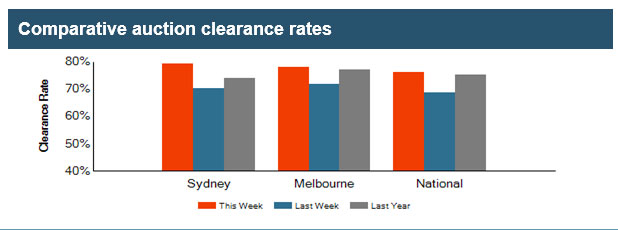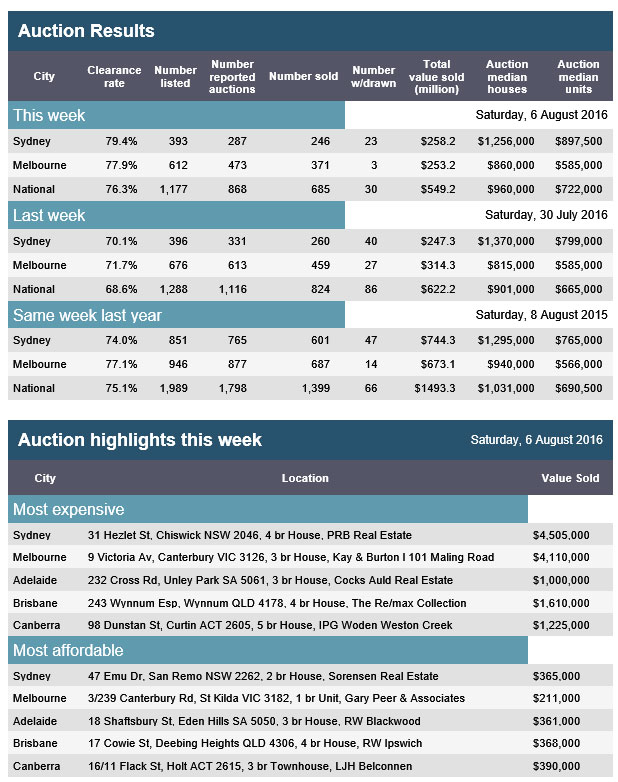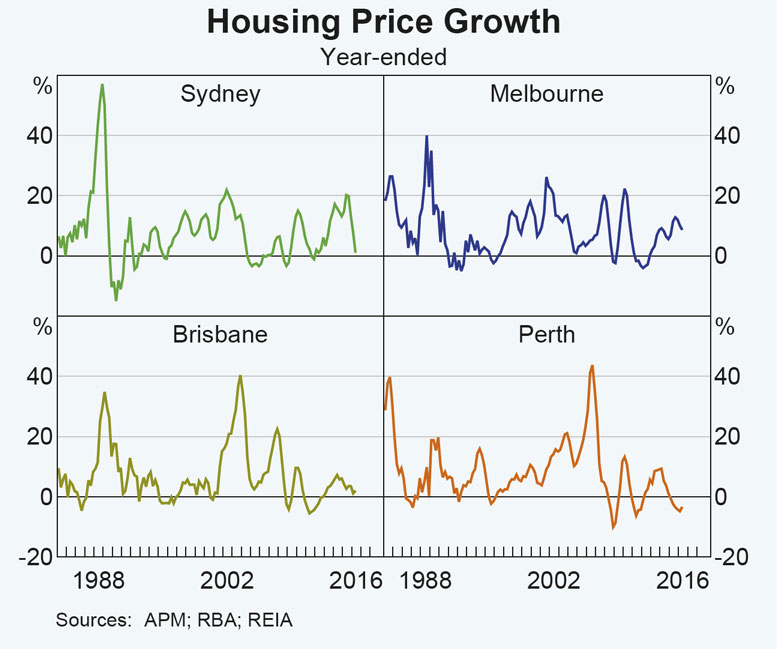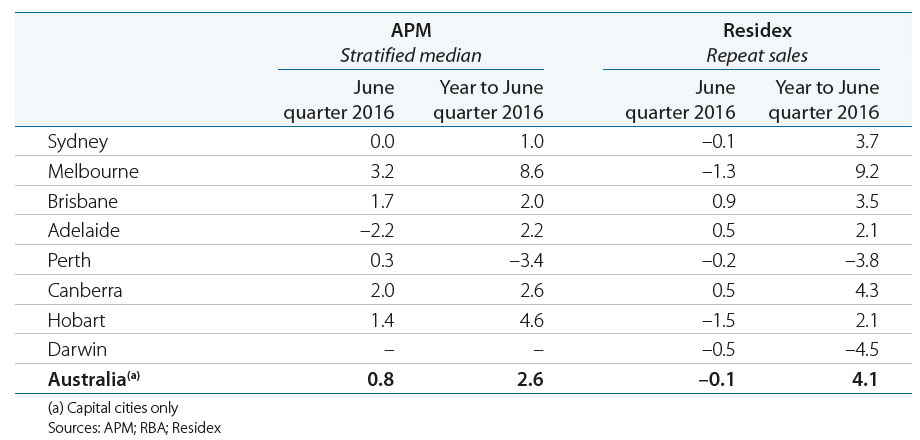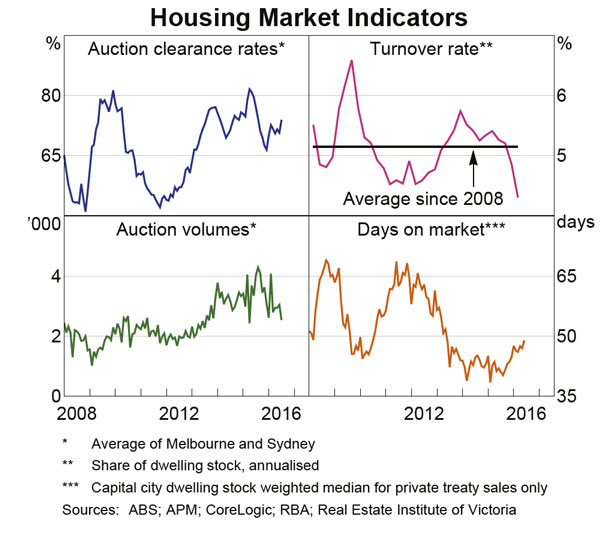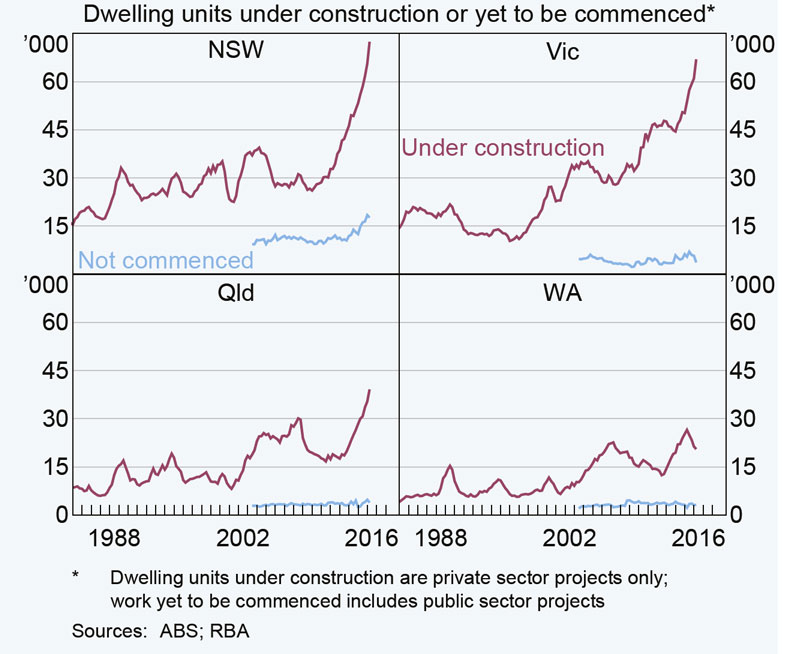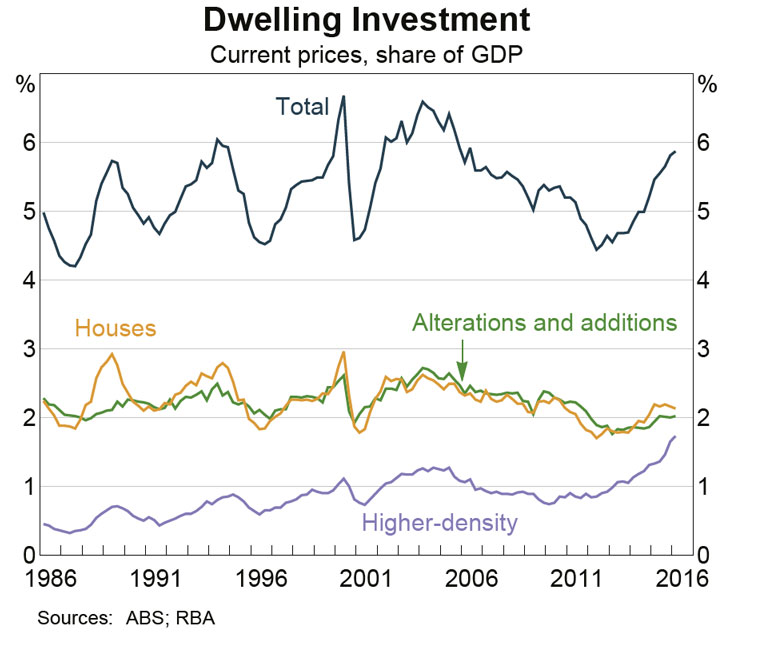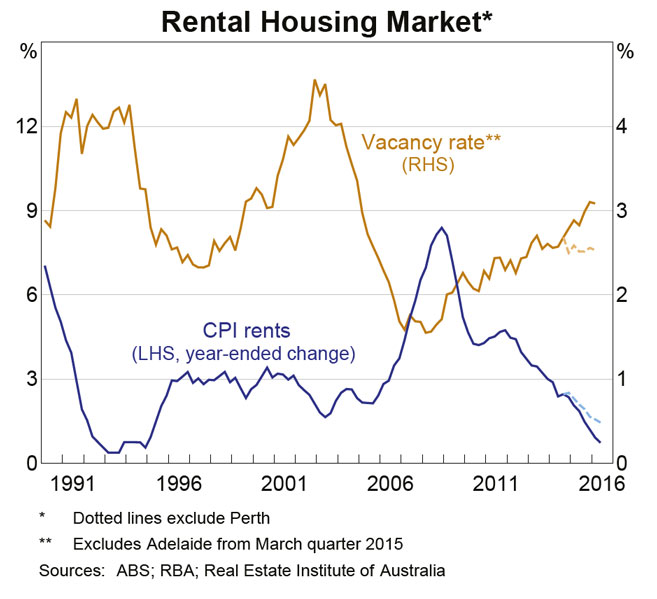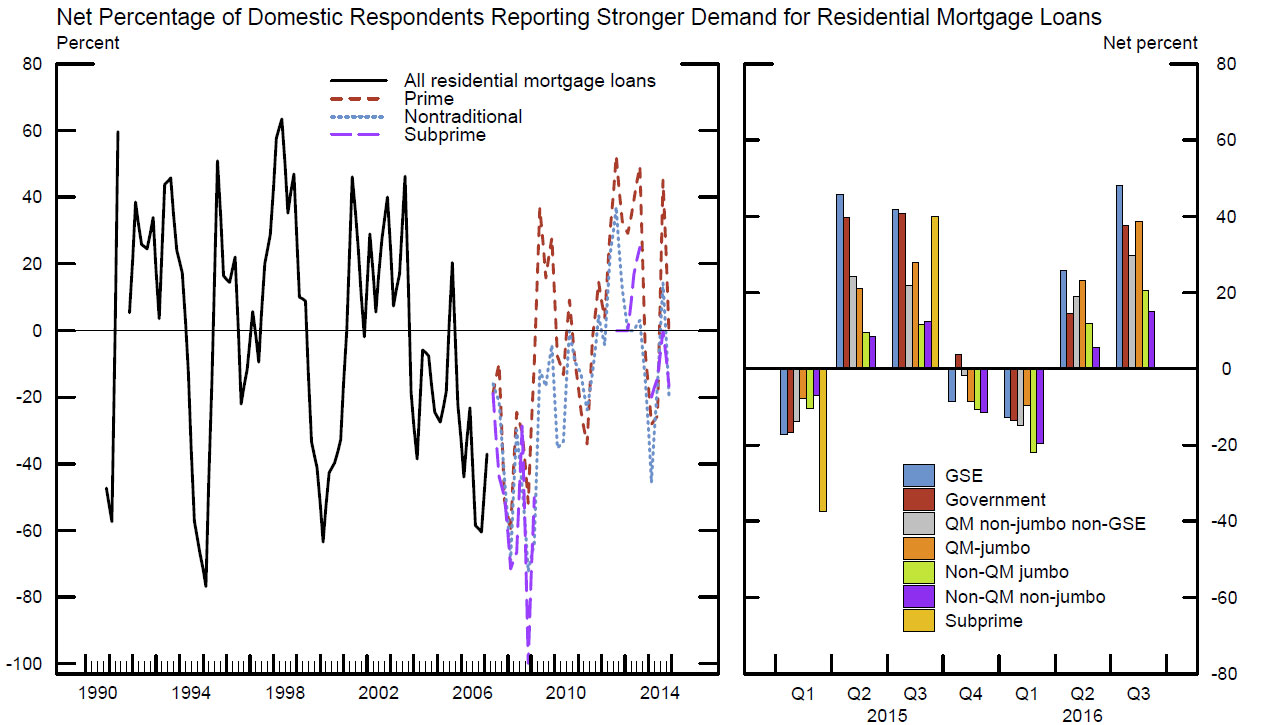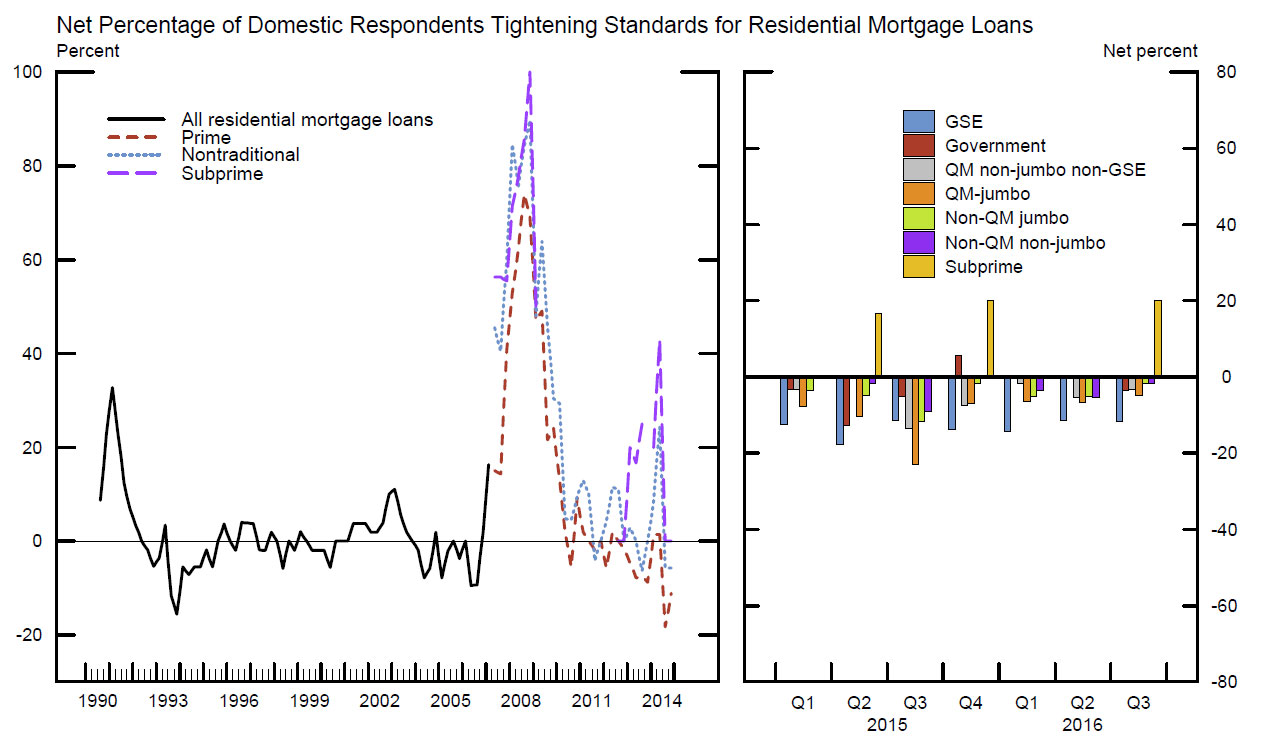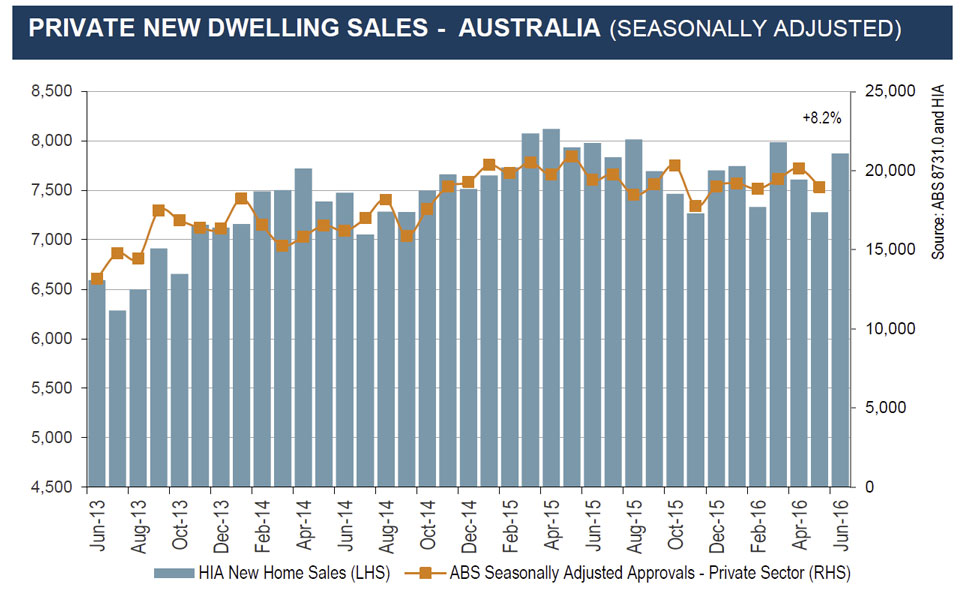Weak inflation has sent interest rates to historic lows, but new housing supply and APRA’s steps to rein in property investment will contain property prices according to an article in The Real Estate Conversation.
While many property owners around the country continue to enjoy strong capital growth, the national inflation rate dropped to 1% in the 12 months to June, according to the Australian Bureau of Statistics (ABS). For what it’s worth, this is below the Reserve Bank’s 2-3% target band and represents the weakest annual rate of inflation in 17 years.Such low inflation would typically mean the economy is weak and unemployment is high. But not in Australia, apparently. A number of commentators say that Australia’s unemployment rate (5.8% as per ABS) is at a stable level and that the economy is ticking along well, even though both company profits and wages are generally down. It’s a confusing mix of circumstances, for sure.
Adding to the complexity, low inflation has seemingly had little effect on the property market, which remains buoyant even after several years of high price growth in cities like Sydney and Melbourne. Prices aside, total housing credit has mostly been up this year (at least for owner-occupiers), and this usually means there are plenty of property buyers out and about and wanting to borrow money.
These buyers are often competing on a limited supply of homes, which is important because the supply-demand equation is central to our reading of the economy. One reason demand for property has so dramatically increased is because of the relatively cheap cost of home loans in recent years, which is due to record low interest rates – 1.5% as of August – implemented by the Reserve Bank (RBA).
The impact of rate cuts
Many media articles lead with the idea that RBA rate cuts are directly linked to the property market. Yet if you read past the headlines, it becomes clearer that the RBA is more concerned with low inflation.
“The RBA is trying to keep inflation at a certain level and the expected outcome from cutting interest rates is a lower dollar,” says BIS Shrapnel senior manager, Angie Zigomanis. “By lowering interest rates it means people will come here [to Australia] and the returns on their investments are lower, and the dollar starts falling on that basis because you’re competing for money.
“It means that the lower dollar starts stoking a lot of the import industries as well. It makes their products more competitive against exports.
“So rate cuts are part of a broader view to ward of inflationary pressures but also to lower the dollar to kick start some other industries that provide economic growth. The housing market is a bi-product [of this].”
Perception is reality
Much of this, of course, is about perception. In other words, high inflation means demand is seen to be strong, and this prompts businesses to invest more, consumers to spend and therefore price to go up.
There are several measures that help the government determine demand levels, like the consumer price index, which gives us that inflation rate figure. It simply measures the changing price consumers pay for goods and services. So in a high inflation environment, prices for the same goods and services are, well, much higher because the underlying demand is so strong.
Right now, CommSec says that price pressures are currently contained in Australia, largely due to greater competition in the market, including online sellers. This means consumers are the main beneficiaries of cheaper prices across all good and services – perhaps with the exception of property prices.
Find the balance
Over the past 20 years general price inflation has been low and stable, consistent with the inflation target since the early 1990s, according to an RBA paper published in 2015. However, such has been the level of property price growth that more recent prices have outstripped the rate of inflation in other parts of the economy, including inflation in the cost of new dwellings.
This has been a concern for the RBA because if property prices go up too high then most money will end up in housing and building instead of sustainable investment in industries, says Zigomanis.
This is why the Australian Prudential Regulation Authority (APRA) last year sought to limit the impact of property investors on the market by capping annual investor credit growth at 10%, which CoreLogic RP Data says has worked well to this point.



